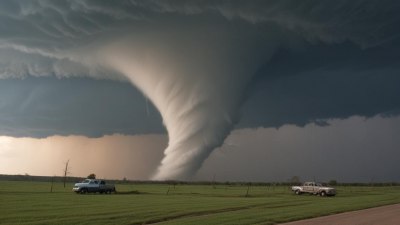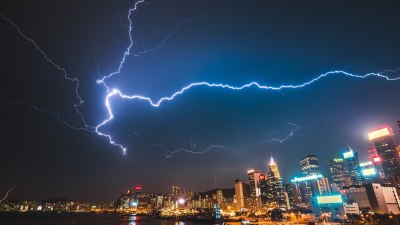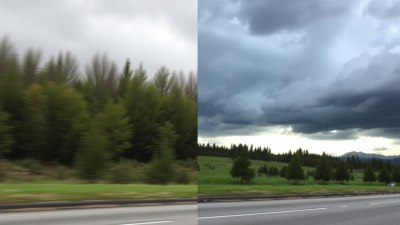What Freezing Rain Does to Morning Commutes
Discover the impact of freezing rain on morning commutes and how to navigate through it safely.

Image by pvproductions on Freepik
Freezing rain is one of the most treacherous types of winter weather that can occur, often causing significant disruptions to morning commutes. This weather phenomenon occurs when rain falls through a layer of air that is below freezing, causing the water droplets to freeze upon contact with cold surfaces. The result is a layer of ice that can transform roads, sidewalks, and even public transport routes into hazardous pathways.
The slick conditions created by freezing rain can make it difficult for vehicles to maintain traction, leading to increased stopping distances, loss of control, and a higher risk of accidents. In many cases, even experienced drivers find themselves struggling to navigate through icy patches, which can result in collisions or vehicle breakdowns. The first few hours of freezing rain, in particular, are often the most dangerous, as drivers may underestimate the ice’s severity.
Impact on Vehicles
For vehicles, freezing rain can create several issues. First, the build-up of ice on windshields and windows can severely limit visibility. Drivers may find it takes a considerable amount of time to defrost or scrape away the ice, further delaying their morning commute. Additionally, the weight of ice accumulation can potentially damage trees or power lines, posing a risk to drivers on the road. If a tree branch falls on a vehicle or electrical lines come down, this can create even more havoc on commutes.
Prioritizing Safety
To safely navigate through freezing rain conditions, it’s essential to prioritize safety. Before heading out, it’s wise to check the latest weather forecasts and traffic updates. Being informed about the conditions can help in deciding whether to venture out at all or if it’s possible to adjust travel plans. If the commute is unavoidable, below are some valuable tips:
1. Slow Down
Adopting a slower speed is fundamental during freezing rain conditions. Reducing speed helps maintain control of the vehicle and decreases the chances of skidding on icy patches. Keep significant distances between other vehicles to allow ample time to react if someone else loses control.
2. Use Low Gears
Employing low gears can also assist in maintaining traction, especially when driving uphill or downhill. This strategy allows for better control of the vehicle on slippery surfaces.
3. Avoid Sudden Movements
Sudden acceleration, braking, or turning can easily lead to losing control on ice, so it’s best to make all movements gradual and smooth. Ensure the steering wheel is steadied and avoid unnecessary sharp turns.
4. Keep an Emergency Kit
An emergency kit in the vehicle can provide peace of mind and essential supplies if anything goes awry. Items to include are blankets, a first-aid kit, non-perishable snacks, extra water, and a flashlight. Consider also having sand or kitty litter to enhance traction if stuck.
Public Transport Disruptions
It is not just individual vehicles that face consequences due to freezing rain; public transportation also encounters significant disruptions. Buses may experience delays or reroutes due to hazardous road conditions, while trains can face icy tracks and signal malfunctions. Commuters relying on public transport should prepare for unexpected delays and explore alternate routes if necessary.
Community Preparedness
Communities can take proactive steps to mitigate the effects of freezing rain on morning commutes. This includes ensuring proper salting of roads and keeping sidewalks cleared of ice to promote safe walking conditions. Local governments can act quickly to implement snow and ice control measures to minimize travel disruption. Communication is also vital; keeping residents informed about current conditions and recommended actions can help everyone prepare accordingly.
In conclusion, freezing rain poses serious challenges for morning commutes, impacting both vehicular and pedestrian traffic. It’s vital for everyone on the road to remain vigilant and prioritize safety during inclement weather. By adopting safe driving practices and being prepared for disruptions, commuters can navigate through the challenges that freezing rain presents. A solid understanding of the impact of freezing rain on morning commutes can lead to better preparedness and safer travel options.











